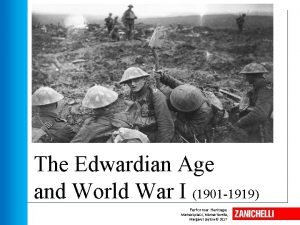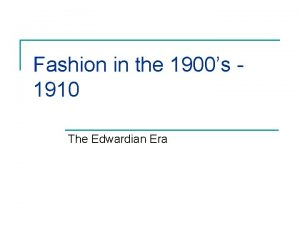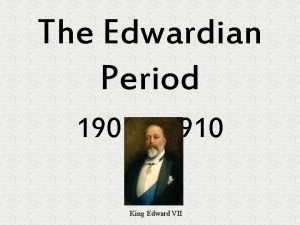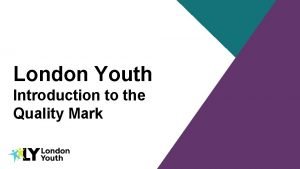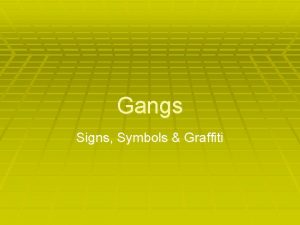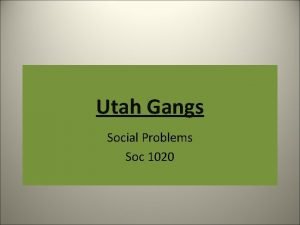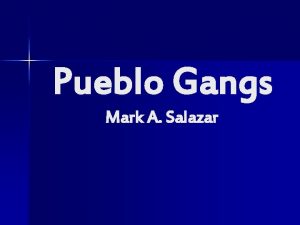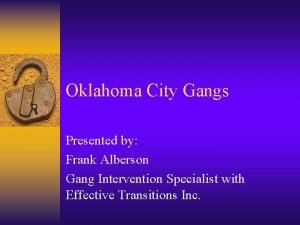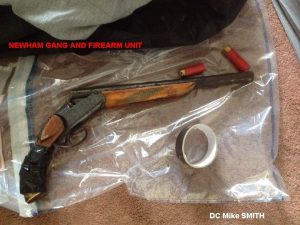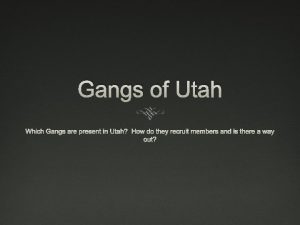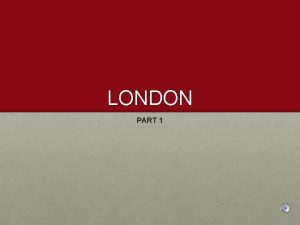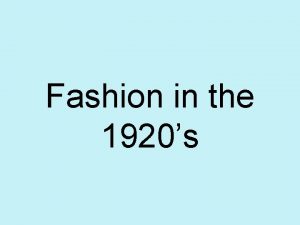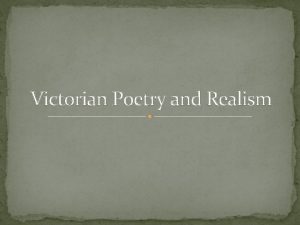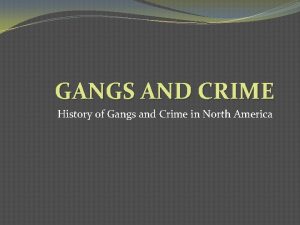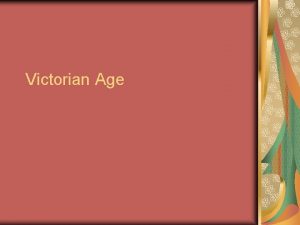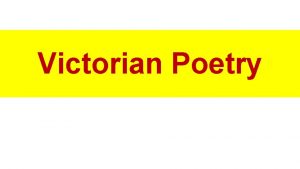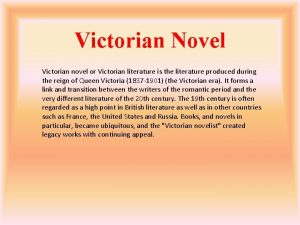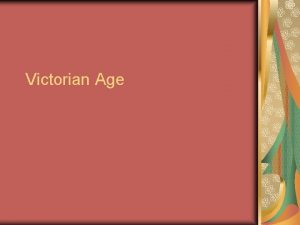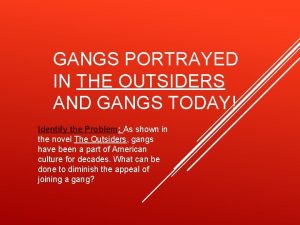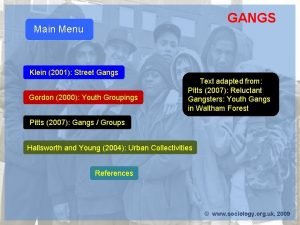Youth Gangs in Victorian and Edwardian London Heather















- Slides: 15

Youth Gangs in Victorian and Edwardian London Heather Shore Cultural Studies and Humanities, Leeds Beckett University

Key Questions: • What was the character and extent of ‘gang’ conflict? • How did the CJS deal with gang crime? • Can we draw any lessons from historical gangs? How meaningful are comparisons?

Hooliganism • Youth gangs identified in British cities from 1870 s • Manchester, Birmingham, Liverpool • London – Summer 1898

Who Were the Gangs? My research (1882 – 1912): • 41 prosecutions; 97 individuals • Old Bailey; London Police Courts

Gang Prosecutions - Ages Defendant Age (total = 97) 30 25 20 15 Defendant Aged (total = 97) 10 5 0 14 15 16 17 18 19 20 21 22 23 24 25 17 or 18 Not known

“The Clerkenwell Tragedy”: • Only 1 female defendant – Eliza Walters (15) • Manslaughter of 12 -year-old Margaret Jane Smith in June 1897 • 1 found guilty of manslaughter • “Clerkenwell Pistol Gang”

“The Savages of the Slums”? Occupations: • 71 described as working • 20 described as ‘labourers’ • 51 semi-skilled and manual workers • 12 costermongers (market workers)

Territory: • Lambeth and Southwark (S); Islington and King’s Cross (N); Clerkenwell and Hackney (E) • Occasionally travelled significant distances for gang fights • Confrontations played out in close neighbourhoods and streets

Structural Factors: • Simple correlations between ‘slum-life’, unemployment and criminality do not work • Stigmatisation of areas by police • Proximity to manufacture, markets, employment opportunities • ‘Respectable’ working-class areas; mixed demographics

Policing and Prosecution: “During the last nine months there had been five cases of use of revolvers in this district. The police had the greatest difficulty in obtaining evidence, as various gangs of lads had become a terror to the neighbourhood” (Chief Insp. Fred Wensley, 1912)

Gang Prosecutions - Weapons Disorderly behaviour/no clear weapon identified 7% Fists and kicking 15% Stick 2% Pistol or revolver 46% Belts (buckled) 5% Knife or dagger 22% Pistol and knife 2%

Charges and Sentencing: • • 65% charged with wounding 3 charges of murder; 1 manslaughter Riot and assault; multiple charges 85% found guilty Prison with HL, 1 and 18 mths 5 sentences to penal servitude, 3 to 10 years 1 reformatory 3 Borstal (from 1908)

Conclusions: • Impact of drugs • Ethnic identity • Territory. Similar maps of gang activity over time. • 2009 report from CSJ linked gang territory to employment and underemployment • Marginalising impact of unskilled, semi-skilled, lowpaid work

Conclusions: • Press and control groups contribute to myths and stereotypes • Desistance – most youths moved out of offending • Interventions that worked – strong ethos of reform and community based strategies

For further information see: • Heather Shore, London’s Criminal Underworlds, c. 1720 – c. 1930 (Palgrave Macmillan, 2015) • http: //www. palgrave. com /page/detail/londonscriminal-underworlds-c. 1720 -c. -1930 -heathershore/? isb=97802303040 48
 Victorian london gangs
Victorian london gangs From the edwardian age to the first world war
From the edwardian age to the first world war Geometric mass floral design
Geometric mass floral design Roman floral design history
Roman floral design history London rangers fc
London rangers fc 1910 era fashion
1910 era fashion Edwardian war
Edwardian war King edward edwardian
King edward edwardian London youth quality mark
London youth quality mark Gang symbols meaning
Gang symbols meaning Nuestra familia indictments
Nuestra familia indictments Gangs in the outsiders
Gangs in the outsiders Pueblo gangs list
Pueblo gangs list Shotgun crips oklahoma city
Shotgun crips oklahoma city Newham gangs
Newham gangs Kearns town bloods
Kearns town bloods

